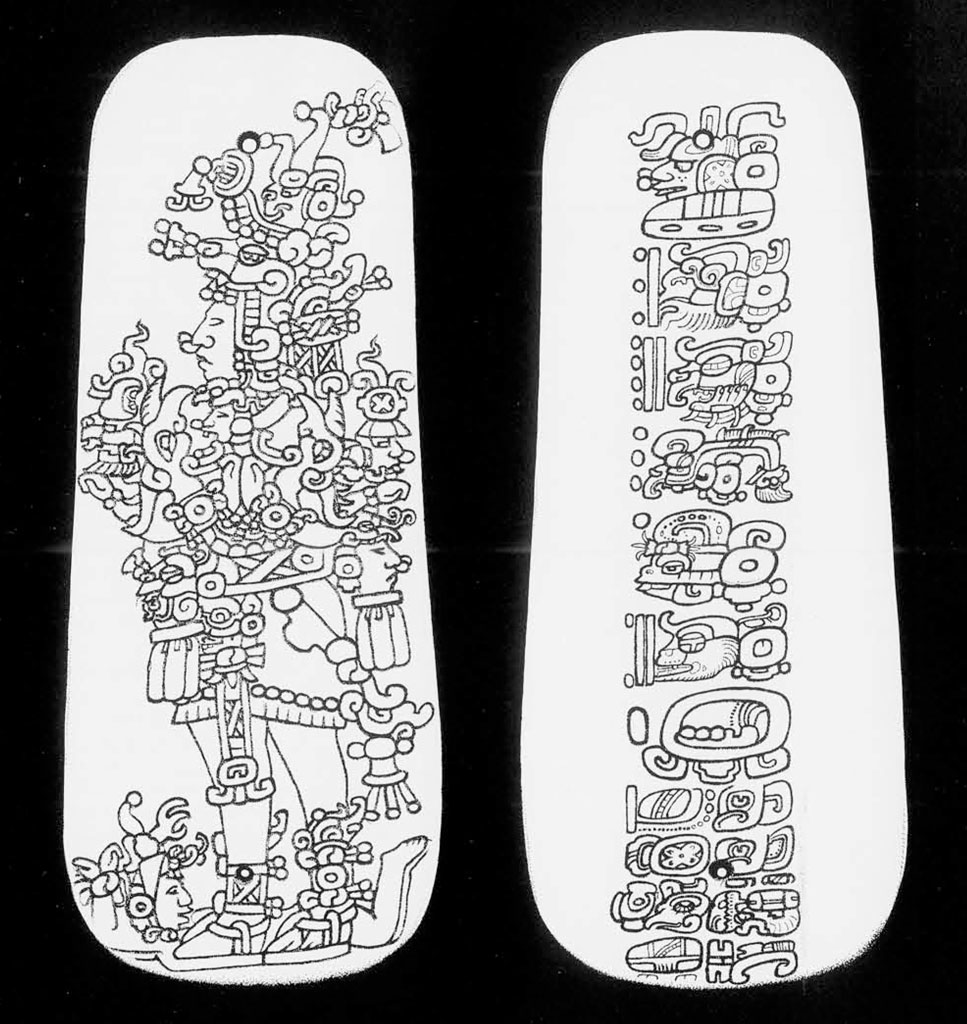Just short of a century ago, in 1864, canal diggers working in the steaming heat of a coastal swamp a few miles northeast of the present Puerto Barrios, Guatemala’s Caribbean seaport, had no premonition that the next shovel load of muck, thrown out on the low embankment, would bring to light one of the most famous Maya art objects known to the world–the Leyden Plaque. This highly polished thin slab of pale green jade shows a delicately incised human figure on the front and, on the back, a long row of Maya hieroglyphs giving a date in Baktun 8 (sometimes called Cycle 8) in the Maya “Long Count.” This was the earliest definitely Maya date believed to be contemporaneous with its carving. The Dutch civil engineer, S.A. van Braam, who directed the canal excavations, salvaged the jade plaque and eventually presented it to the Rijksmuseum voor Volkenkunde in Leyden, Holland, where it has been treasured ever since.
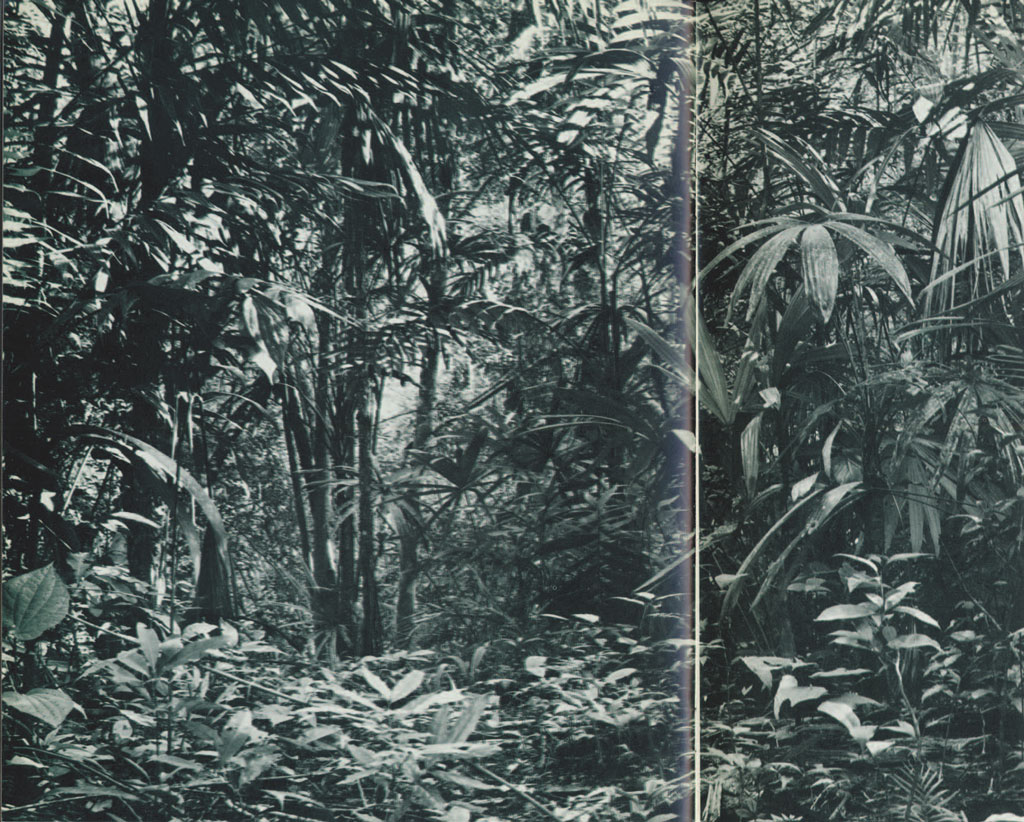
Fifty-two years later, on May 5,1916, Dr. S.G. Morley of the Carnegie Institution of Washington, while exploring the newly discovered ruins of Uaxactun, fifteen miles north of Tikal, found Stela 9.* This monument, too, became renowned because it was the first Maya stela to be discovered with a Baktun 8 date, and for another forty-three years it was to remain the oldest known contemporaneously dated Lowland Maya large monument.
Little did we of the University Museum’s 1959 Tikal Project staff suspect the importance of a carved stone reported to us one day last spring by Marcos Lopez, one of the Project workmen. Marcos, while passing through a dense section of bush only two hundred yards west of the Great Plaza and just beyond a clearing made for dumping backdirt from the Plaza excavations, noted carving on a stone projecting slightly from the leaf-mold blanketing the forest floor. He had been trained, as have all Project workmen, to report carved stones or any unusual features encountered in Tikal and he called Aubrey Trik’s attention to the new sculpture. Trik, the Project architect, inspected the carved stone, brushed away a few more leaves, and correctly identified the sculpture as a new, previously unknown stela. All the staff rushed over to view the partly exposed and weathered sculpture, each speculating on its age, style of carving, whether it was complete, and so forth. The stela lay face up, buried by soil and leaf-mold except for the left edge of the front. We were ignorant for a long time of the dated inscription on the back. We tentatively referred to the stone as the “Marcos Stela.”
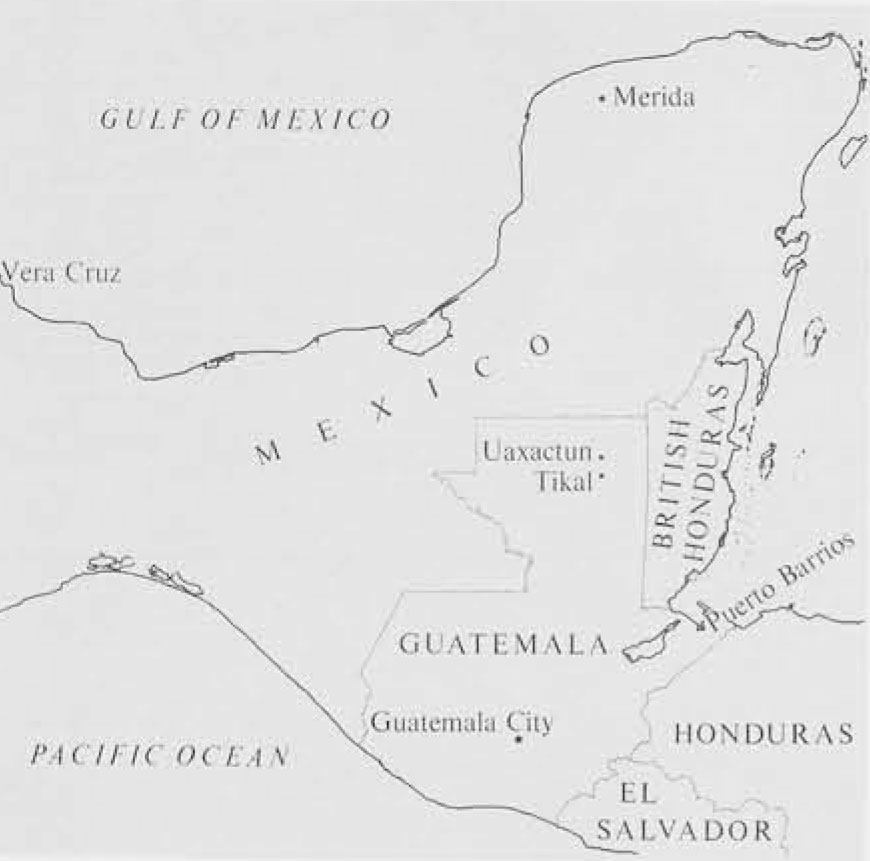
A thick jungle growth enveloped the area of the stela; because of continued unseasonal rains, for fear of damaging the carved surface, we delayed clearing and excavation until the rains let up and the soil dried. Trees in a radius of approximately fifty feet had to be felled to open a breech in the forest canopy large enough for sunlight to penetrate the area and dry the soil burying the monument. The men expertly cut and felled the forest giants away from the carved stela and then cleaned the opened area of rotting leaves and branches which litter the forest floor. This clean-up brought to light several other large stones of which only one showed faint traces of carving. The position of each stone was plotted on a plan of the area and, as the soil dried, a six-inch surface layer was removed and searched for even tiny chips of stone which might belong to the monuments. This operation exposed the outline of Stela 29, lying flat on the ground with its carved front face up, but the monument was not complete. This was a disappointment. We wondered whether we had another example of fragmentation and the resetting of an incomplete stela like many others of Tikal’s early monuments.
The upper half lay on the rear slope of a mound near a fragment of a new carved altar (Altar 13). Nearby were two possible fragments of plain monuments. Had the stela fragment been discarded where we found it along with other fragments? Had it lost its importance to the people of Tikal or had the fragment been salvaged from an earlier action of disrespect and re-erected to again serve its original purpose? All these questions and many others confronted us as excavation in the vicinity of Stela 29 continued intermittently.
We dug trenches, east-west and north-south, through the area of the scattered monuments searching for floors, evidence of construction, and the level of undisturbed bedrock, thus leaving Stela 29, as we excavated around it, on a pedestal of earth. Probing under the monument’s edges failed to disclose a raised border or any other indication of carving on the under side.
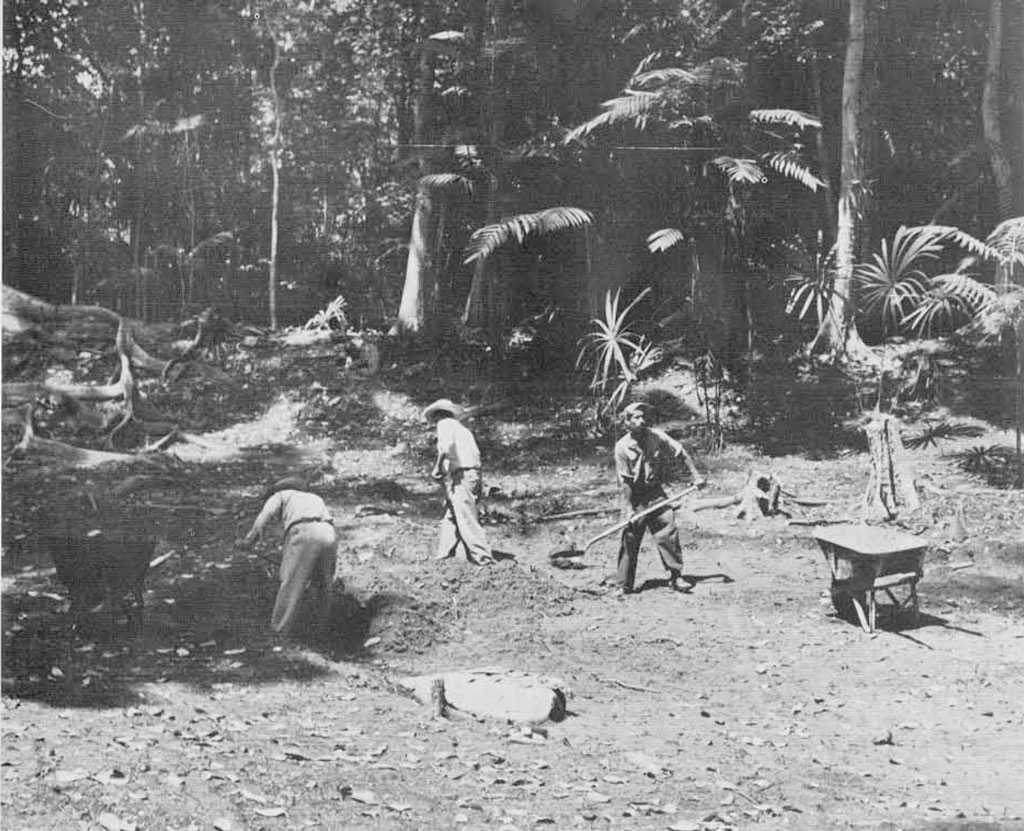
The work in the Great Plaza and elsewhere in Tikal occupied most of our attention, the dry season advanced, and further excavation continued around the Stela 29 area sporadically. We believed the main task had been completed.
Saturday morning, April 4th, Mary B. Ricketson and Benedicta Levine requested some field work as a change from their heavy duties in the camp’s ceramic laboratory. Stela 29 offered such an opportunity. After six weeks of exposure, the carved front had thoroughly dried but still required further cleaning before it could be photographed. Ricketson and Levine carefully scrubbed the carved area with a soft brush and water and left it to dry. That afternoon I returned with several workmen to raise the stela on one edge for photography. Layers of soil clung to the underside as we turned it but a few chunks dropped off revealing carving. Excitement grew as bars, dots, and part of an Initial Series introducing glyph appeared. We braced the stela on edge and then each man was given a sharpened soft green stick with which gently to pry away the impacted earth. First the introducing glyph was not clear, next emerged the bar and two clear dots and the faint trace of a third to indicate a Baktun 8 date. We could not see the katun coefficient but I halted the cleaning long enough to explain to the workmen the importance of the I.S. introducing glyph, the bar and three dots of the baktun, and that no matter what katun should appear we had found the first unquestionable Cycle 8 inscription for Tikal. Their enthusiasm was equal to mine as we, with trembling hands, flaked away the soil from the katun glyph. Despite the excitement of the moment, they were unprepared for the war-whoop I let forth when two bars and two dots emerged with the katun glyph. Here was a great discovery such as only occasionally rewards days, weeks, months, even years of hard preserving effort. We feverishly cleaned the remaining glyphs, the 14 tuns, 8 uinals, 15 days, and just one dot of the otherwise missing “Calendar Round” date.
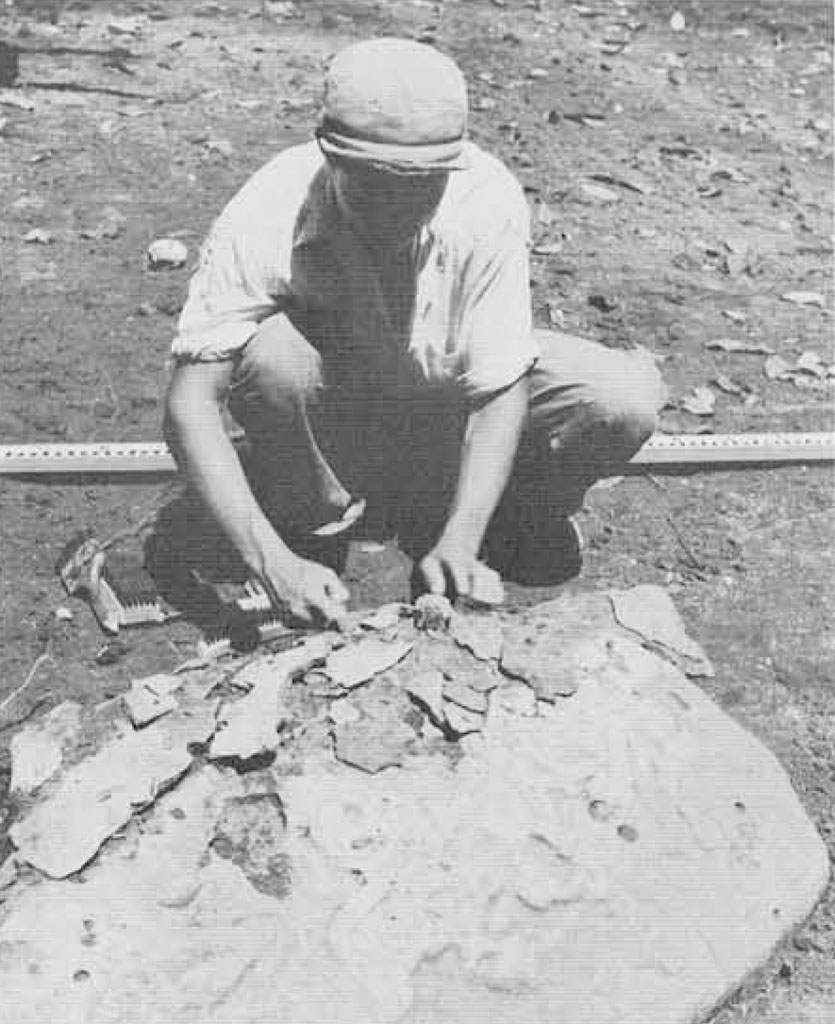
Aubrey Trik and all the men working around the Great Plaza heard our shouts of joy and came down to find out what was going on and then they too joined in the excitement. In no time, word travelled through the whole University Museum camp and all hands joined wholeheartedly in a Saturday evening celebration. All, that is, except George Guillemin who buried himself in his room with books from the camp library, paper and pencil, and calculated the missing Calendar Round date as 13 Men 3 Zip, of which only the upper left dot of the number 13 is preserved on the monument.
The following morning, Sunday–our day of rest (?)– Vivian Broman and other staff members assisted with the photography. The film was rushed that afternoon by plane to Guatemala City where Miss Joya Hair and Miss Inga DeWits cheerfully worked that night developing it and making prints. A cable to the University Museum announced the discovery of Stela 29 and prints were immediately forwarded.
Our excitement over the Maya date 8.12.14.8.15 13 Men 3 Zip may be appreciated in that it precedes that of the Leyden Plaque, known since 1864, and of Uaxactun Stela 9 discovered in 1916.** Until the discovery of Tikal Stela 29, intensive exploration and excavation throughout the Maya area during the past eight decades had not brought to light a large stone monument with a contemporaneous Maya date earlier than that inscribed on the Leyden Plaque. Stela 29 predates the Leyden Plaque by twenty-eight years and Stela 9 at Uaxactun by thirty-six years.
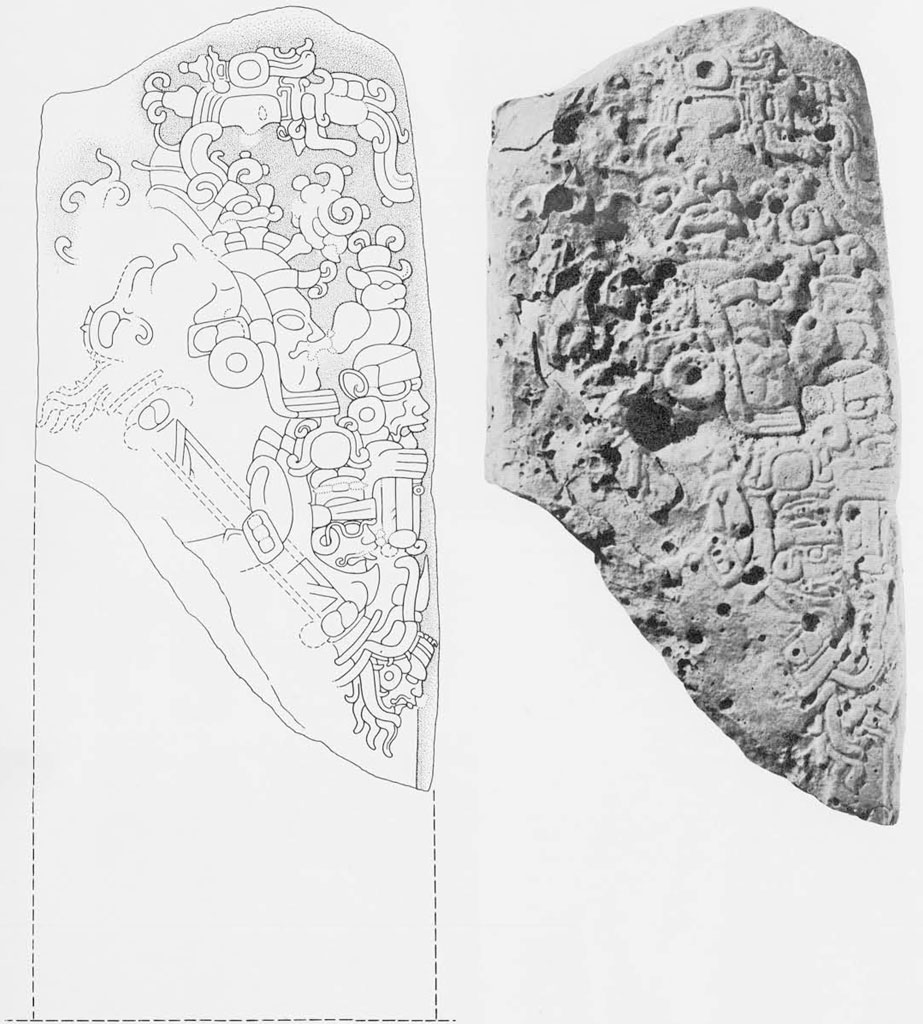
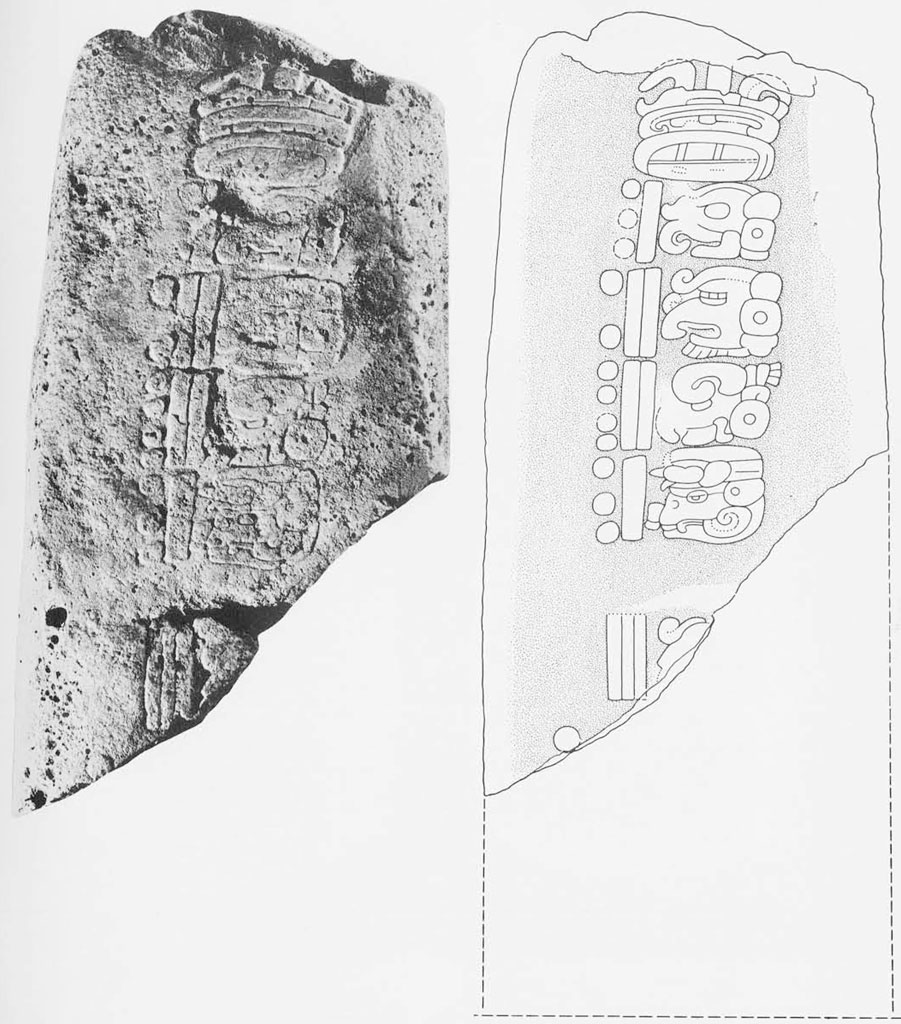
Morely, through a study of the style of carving on the Leyden Plaque, presented a plausible case that this jade pendant actually had been carved in Tikal or the immediate vicinity. We illustrate here an accurate drawing of the Leyden Plaque and also a drawing of Stela 29, both by William R. Coe. A general similarity in style is quite evident. The plaque is in the shape of a miniature stela. The front of each shows a standing, elaborately costumed human figure. Each has a hieroglyphic inscription on the back; on the Leyden Plaque this is a single vertical row of seven large glyphs above a double row of eight smaller glyphs; on Stela 29 is a vertical row of six large glyphs also above a double row of glyphs but, in this case, an unknown number.
We may only speculate as to where the original and complete Stela 29 was erected in Tikal, how long it served in its original position, and the cause of its fragmentation, and the whereabouts of its missing lower half. The stela does provide another early contemporaneous Maya inscription dating the sculptural style, both of the human figure on the front and the glyphs on the back. The known practice of carving and erecting large stone monuments in the Lowland Maya area has been extended back in time by thirty-six years. However, we also know that the Highland Maya at Kaminaljuyu and other Mesoamerican people of Guatemala and Mexico, had been erecting carved stone monuments long before the date of Stela 29. Continued excavation and exploration in Tikal quite possibly will uncover still older monuments than Stela 29 but they would have to be considerably older to prove that the Lowland Maya first developed in Mesoamerica the art of hieroglyphic writing and the practice of erecting large stone monuments.
Photographed by: William R. Coe
